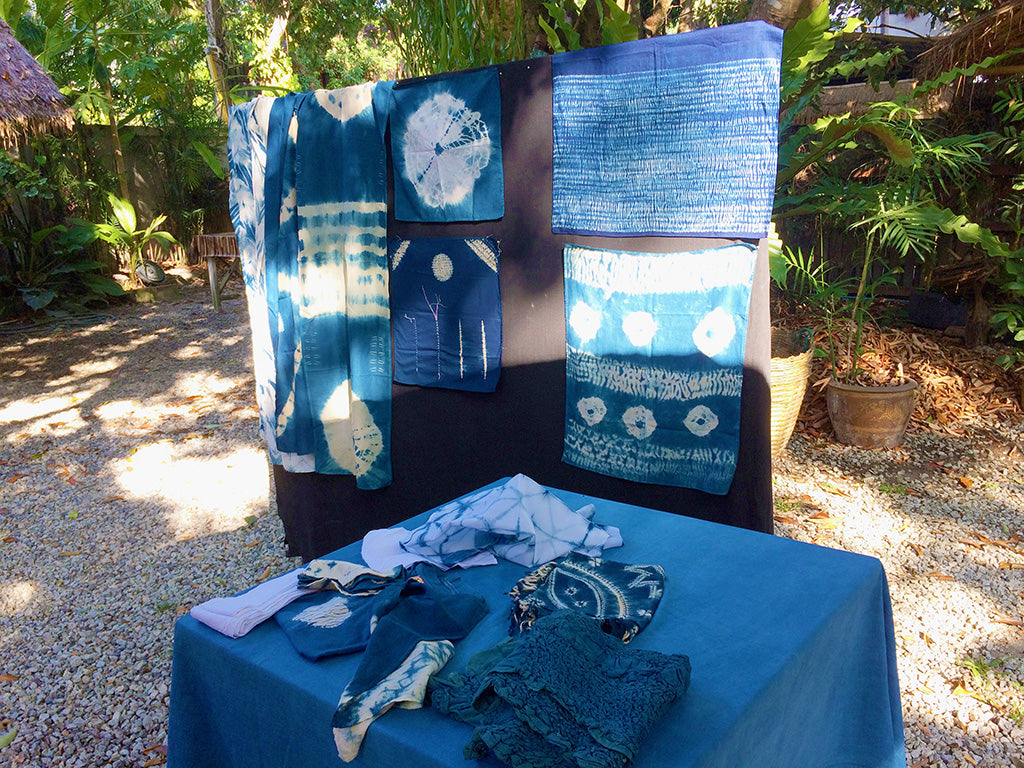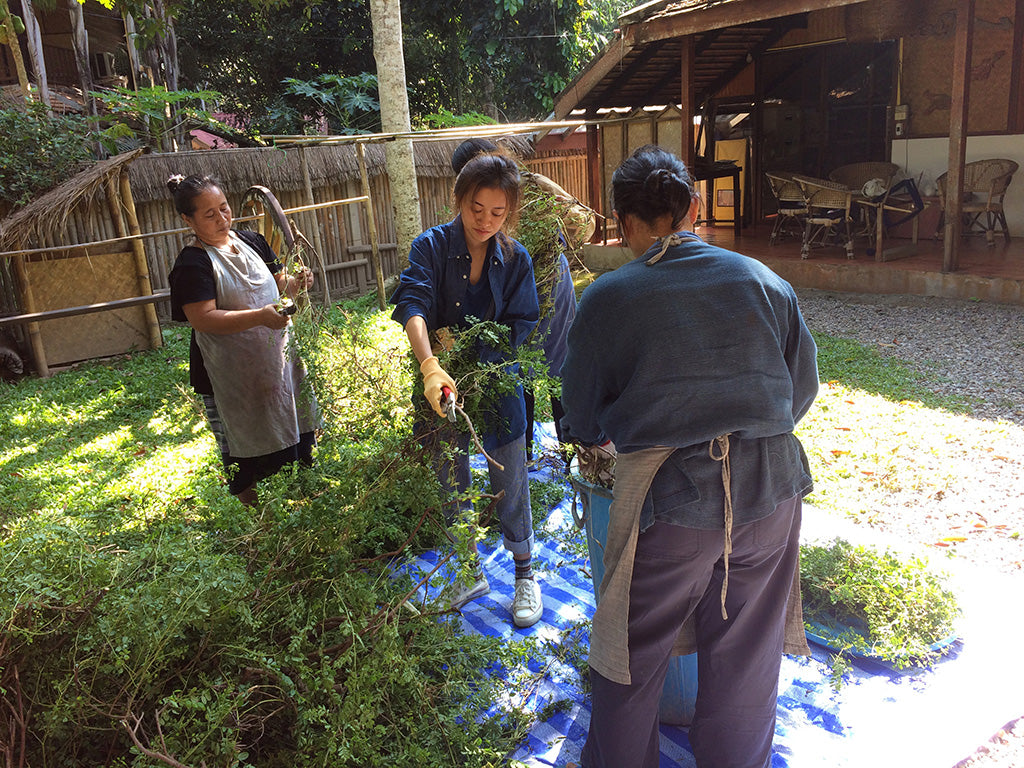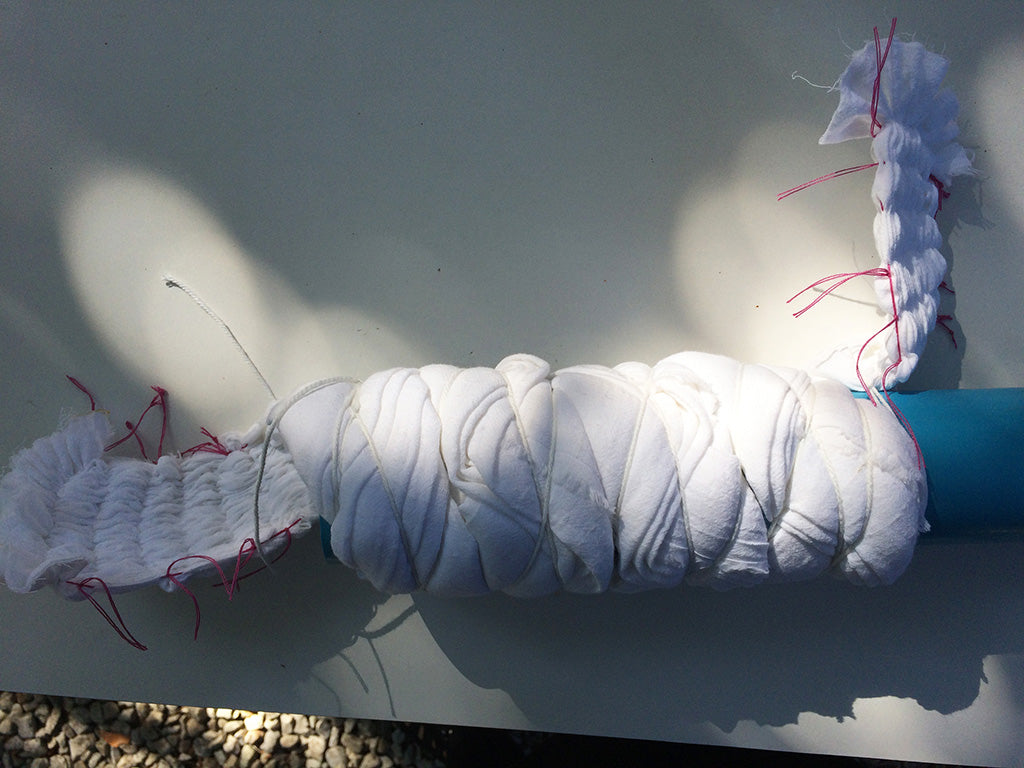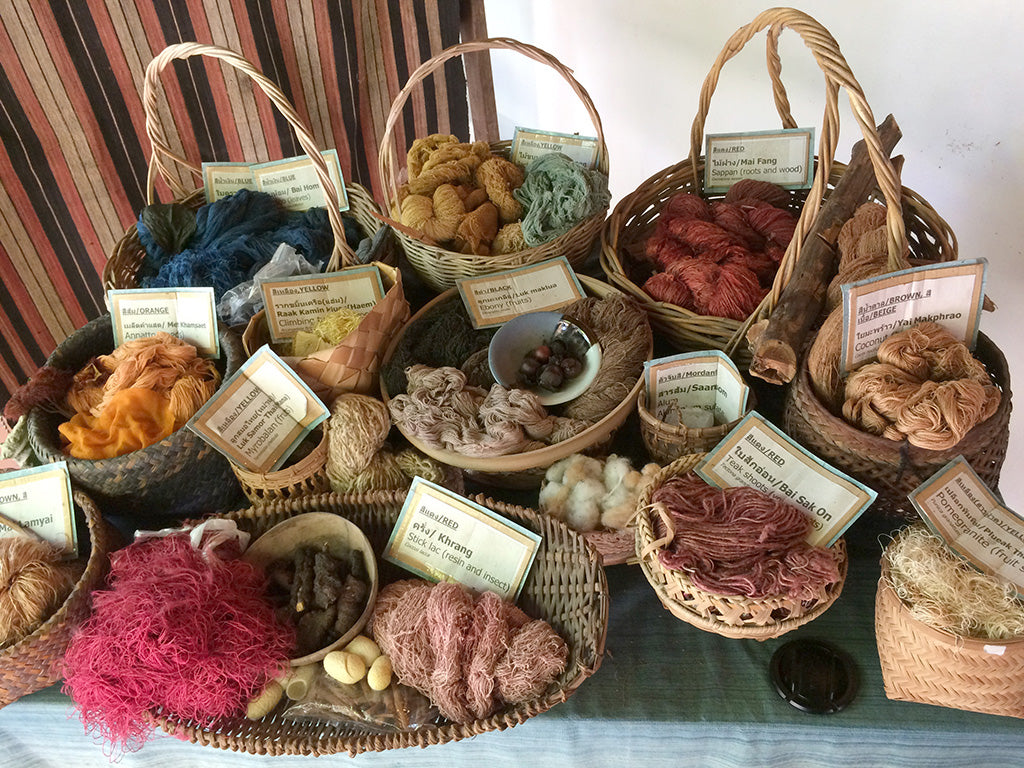Indigo at Studio Naenna
THE ANCIENT CRAFT OF SHIBORI and INDIGO DYEING
So much energy goes into the preparation of a craft – in this case indigo dyeing. From the planting and nourishing of the indigo plants, extracting the dye from the leaves, maintaining the right balance of oxygen and organic products to create a friendly dyeing vat then to the careful folding and finally dyeing of fabrics in the indigo vat.
PEACE and TRANQUILITY in a NATURAL ENVIRONMENT
The surroundings at Studio Naenna on the outskirts of Chiang Mai in Northern Thailand are peaceful, lush and cool. Shade is provided by huge trees and wooden buildings - it's a beautiful natural setting to increase my knowledge of indigo and shibori … Our small group of 5 keen crafters gradually assembled at this serene property and met Patricia Cheesman, talented teacher and expert in Tai textiles, natural dyes and weaving. Patricia explained the cultivation of the indigo plants, the organic process of capturing the indigo dye and nurturing of the indigo vat.
HARVESTING and SOAKING INDIGO LEAVES
We watched the freshly harvested khram indigo leaves being cut and bundled into suitable bunches for the large soaking vat. These small leaves need to soak for around 24 hours, while the hom indigo leaves which are larger, need around 48 hours soaking time. They are weighed down with large stones and left to soak in order for the dye to be extracted from the leaves during the fermentation process.
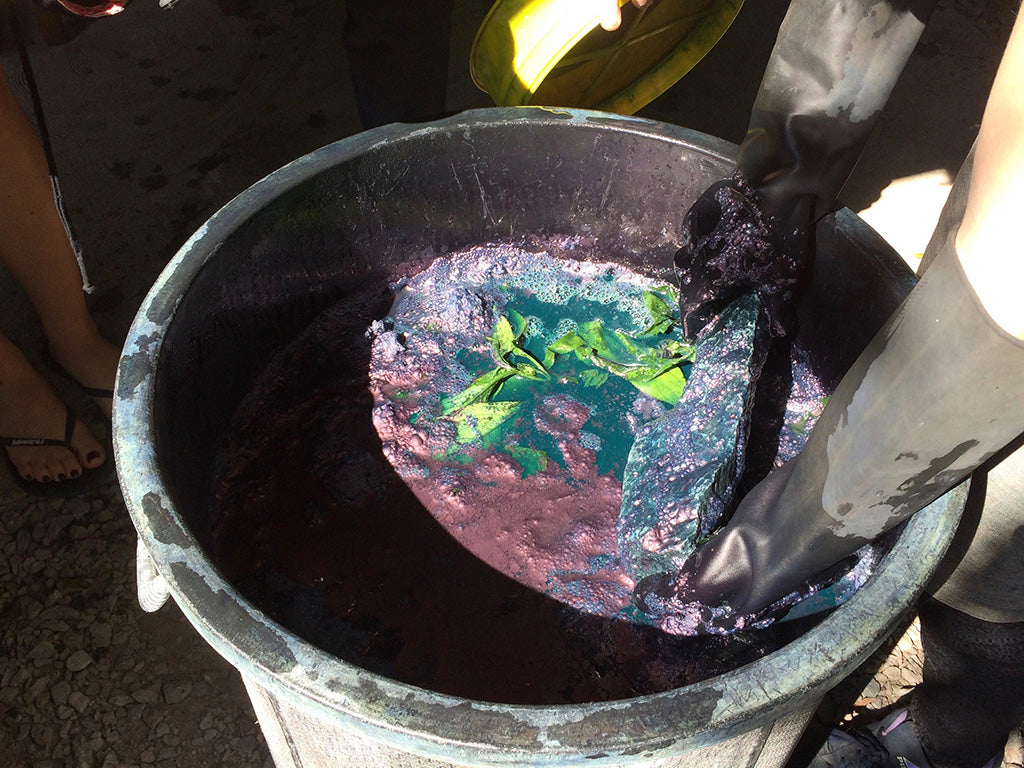
EXTRACTING THE INDIGO
After soaking, the leaves are carefully removed and the water is now a magical and brilliant peacock blue/green! It takes expert knowledge to determine when the dyed water is ready. A measured quantity of slaked lime is added to the vat and the oxidization process begins. This is a laborious job and we all experienced the hands on (and back breaking) process of scooping the green water and watched it turn to deep indigo blue as it was oxidized in the air. This vigorous beating process takes 20 minutes or more.
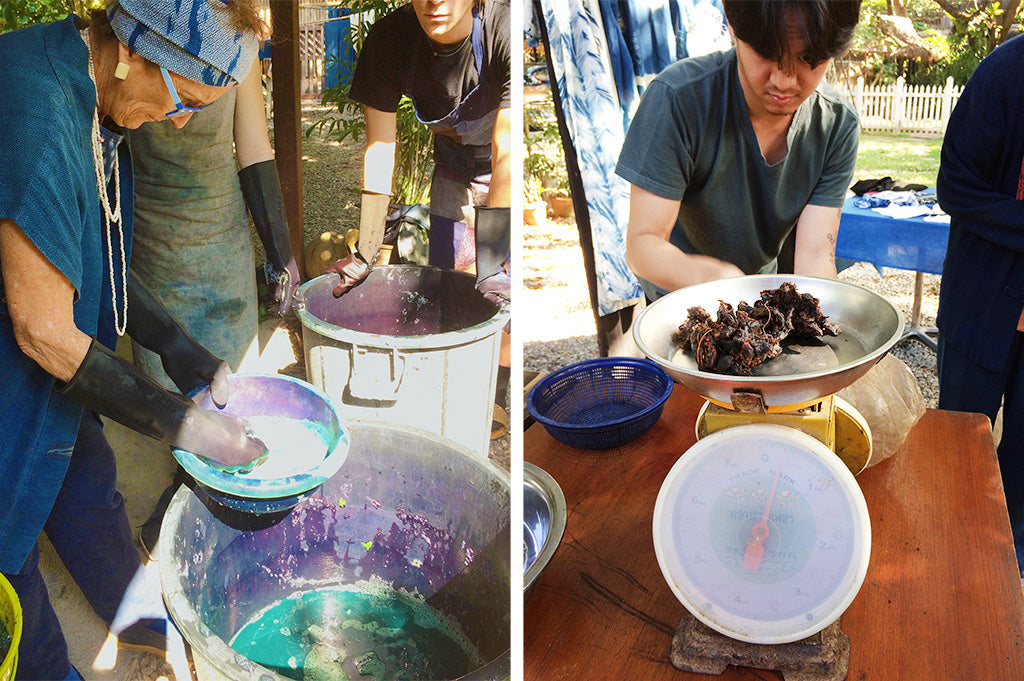
The vat is then left to precipitate overnight to allow the indigo dye paste to collect at the bottom. The paste is then carefully strained out through cotton fabric and becomes the basis for the actual dyeing vat. The pH of the mixture is balanced by adding just the right amount of fructose in the form of tamarind water and soda ash. The dyeing vat can be kept and nurtured for many, many years.
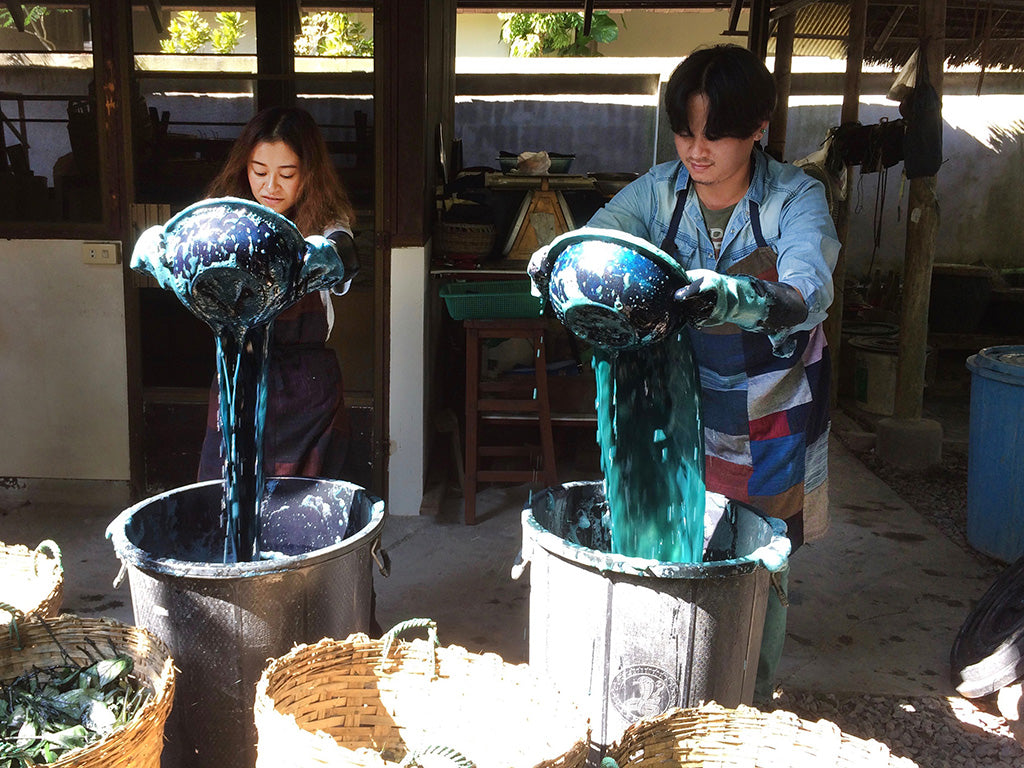
SHIBORI FOLDING TECHNIQUES
Our cotton fabrics were clean and ready, so Patricia showed us the various methods of folding, stitching, tying with rubber bands and scrunching the fabric to achieve a variety of different tie dyed and Shibori designs. We then had time to stitch, tie, bundle and scrunch for ourselves over the 2 day workshop ...
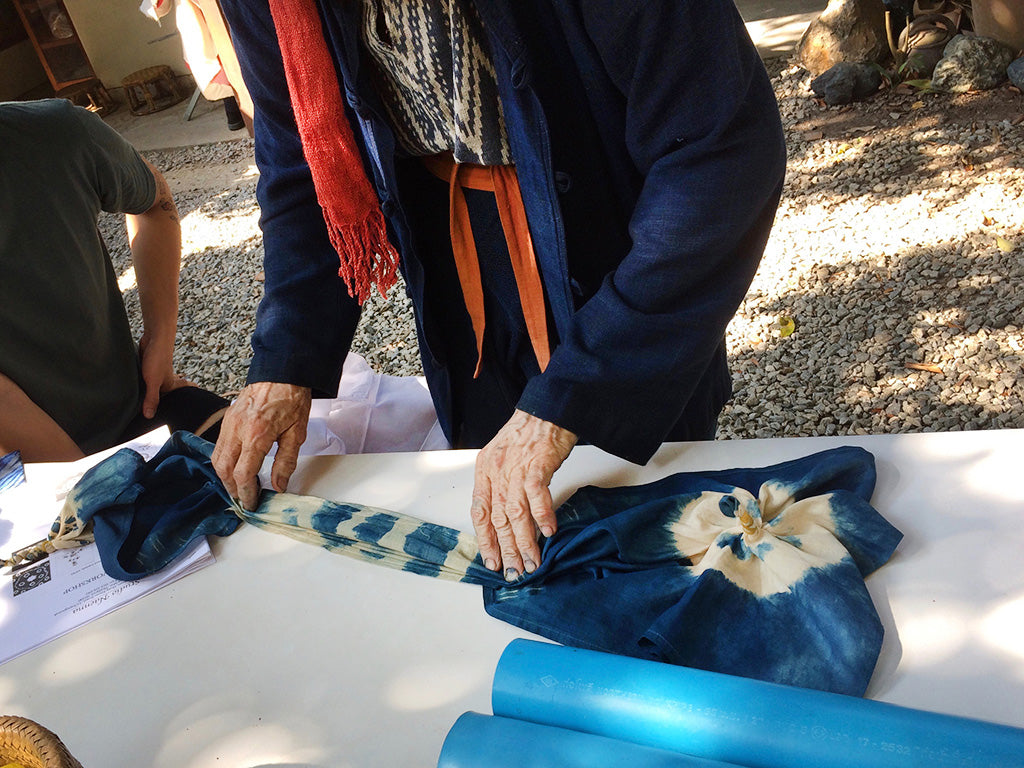
Large areas of fabric, especially for scarves and sarongs can be dyed on a ‘pole’ to make the typical triangular shapes. This is also helpful when the indigo vat is not large enough to cope with long lengths of cloth.
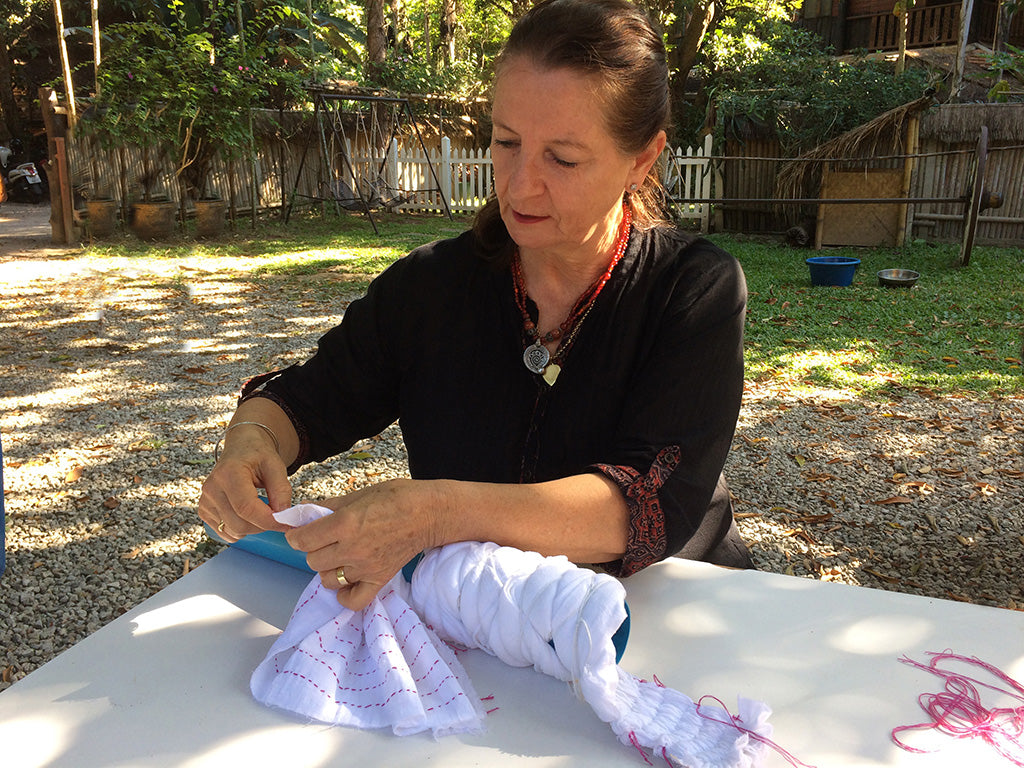
My sarong-in-the-making was stitched with rows of strong, tiny stitches along the borders before being folded and bound with string onto the ‘pole’ and firmly pushed to one end. The stitching lines were then tightly pulled up to keep some of the fabric white and some a lighter shade of indigo.
INDIGO DYEING
Than came the time for dipping the fabric into the indigo vat - sometimes up to 10 dippings are needed to achieve the right depth of colour. The exciting part is opening the fabric - this piece was very tightly constrained with rubber bands before dyeing. Then there was lots of rinsing before a final dip into alum to help fix the dye.

Our group used stitching, tying, banding, pole binding and embedding small stones into the fabric using rubber bands to achieve a delightful array of stunning designs. All unpredictable to a large extent, but with practice …
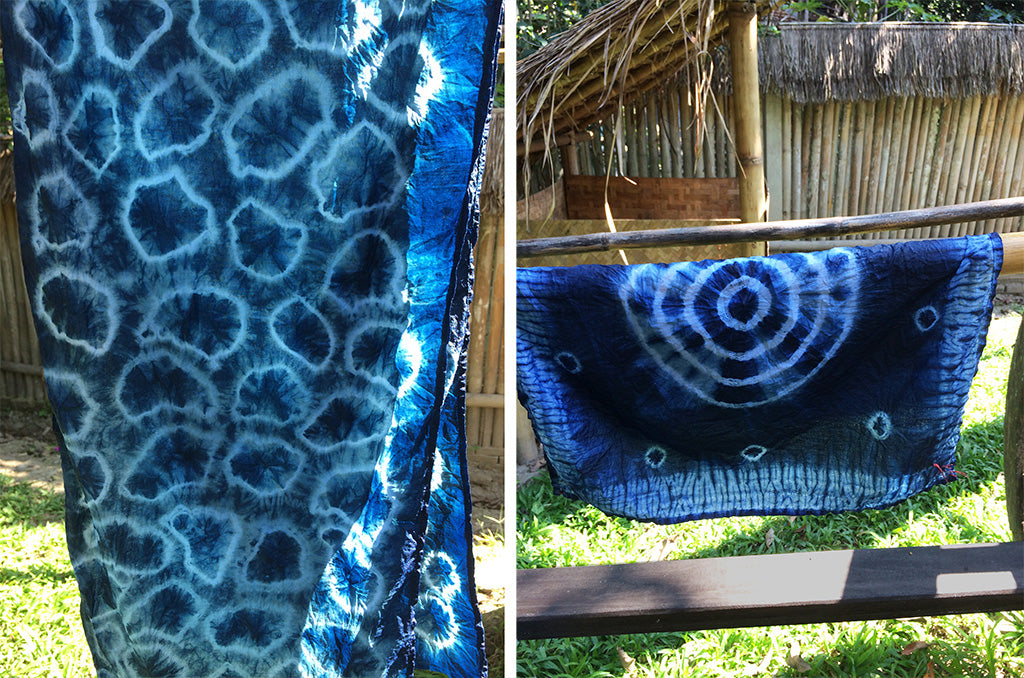
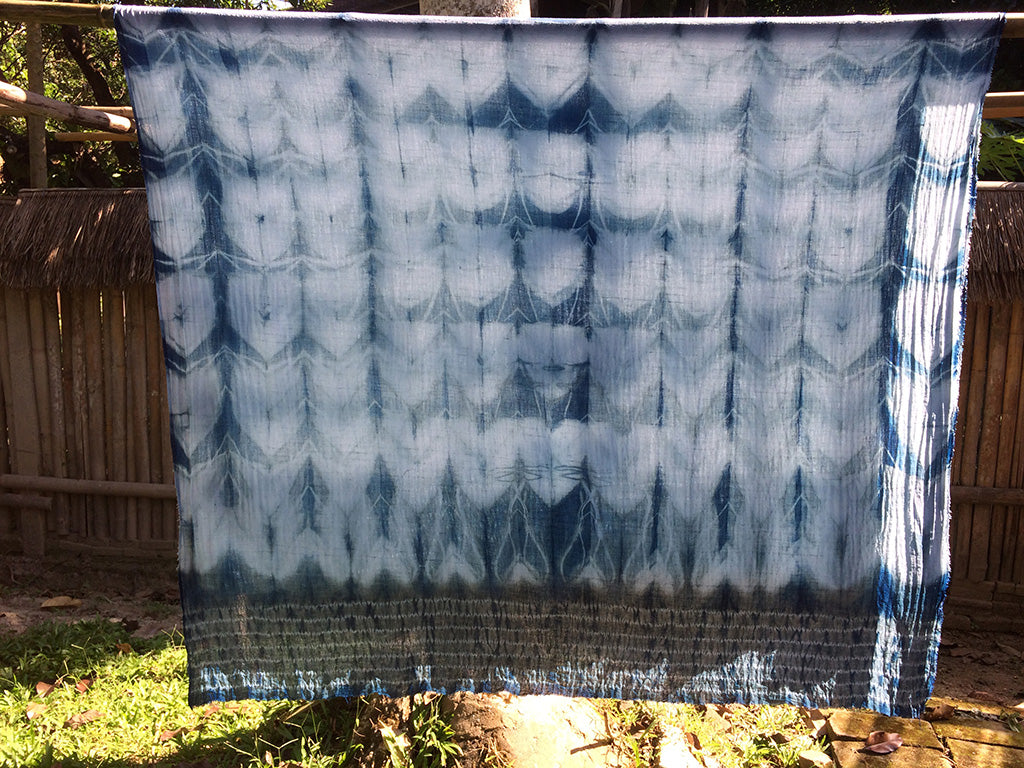
NATURAL PLANT DYES
At Studio Naenna the threads used for their traditional ikat weaving are all dyed using natural plant leaf, stem, root and bark pigments. The colours come from plants like mango wood, annato seeds, Indian mulberry roots, indigo leaves, ebony fruits, betel nut and neem bark. Studio Naenna has a commitment to preserving the natural environment and promoting traditional textile crafts in northern Thailand. You can find their home page here.
Sign up for our newsletter here to get the latest updates
and 10% OFF your first order!

